Water seal for a well: how to close up cracks in concrete rings
Leaking in a well can seriously affect the quality of drinking water. Through a seemingly small gap in a concrete mine, household drains will begin to penetrate, technical liquids spilled onto the ground. Sand will crumble from the horizons lying above the aquifer, which will negatively affect transparency. Unpleasant, right?
To restore the integrity of the wellbore, a rapidly hardening composition will be required, which will quickly eliminate the defect in the concrete structure. A hydraulic seal for a well will permanently relieve leakage, large and small cracks. We will tell you how to choose it correctly.
We have described in detail the process of applying repair composition. We offer recipes for self-cooking fillings. The information is supplemented by useful schemes, photos and video guides.
The content of the article:
Types of seals for hydraulic structures
Previously, before the invention of water seals, wooden boards, hemp and jute materials were used as plugs for wells. A significant drawback of obsolete species was the rapid delamination and decay, which led to a deterioration in the quality of the composition and taste of well water.
With the invention of hydraulic seals, it became much easier to eliminate leaks and operate wells. Modern manufacturers of building materials offer ready-made waterproofing compounds based on polymeric materials.
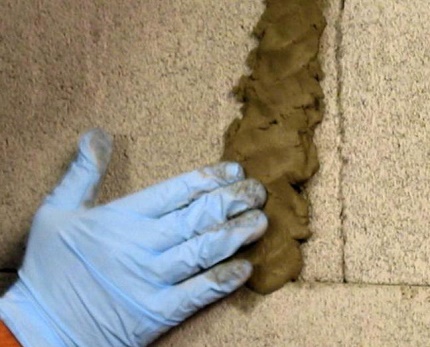
However, many well owners and professional repair crews prefer to use seals of their own manufacture, rightly believing that this will lead to cheaper repair work without loss in quality.
Water seals are divided into two types:
- Pressure, quick-setting mixtures. It takes 10 to 60 seconds to solidify them.A special repair compound with waterproofing properties is applied on top of such a seal.
- Non-pressure hardening within 5-7 minutes. Such mixtures are used when carrying out not emergency work, but preventive ones, for example, planned insulation of joints.
We will discuss further details about each option.
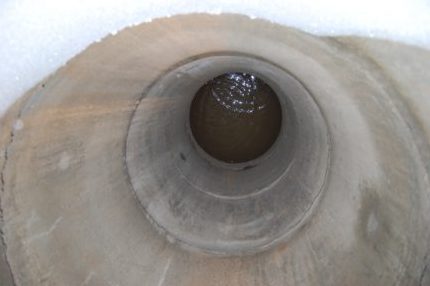
Waterproofing grouting materials (hydraulic seals) are often used in emergency cases, when how much water runs out or seeps depends on the solidification time, and the magnitude and severity of the damage that can be prevented depends on the quality and proper use of the water seal.
High-quality water seals can eliminate leaks in 30 seconds, stopping the flow to 7 atmospheres!
Waterproofing seals are used in the following cases:
- to protect drinking water in a well from groundwater
- cap of water breakthroughs in basements, adits, wells
- isolation of a breakthrough in places of contact of the floor, walls, between the foundation blocks
- tight sealing of joints and cracks in wells
- express repair of pipelines.
A water seal in concrete wells serves not only for emergency repairs and elimination of leaks, but also to prevent changes in water quality in places of thinning, increased filtration.
Waterproofing seals for wells must meet the following requirements:
- reliably close joints, cracks, creating a monolithic connection;
- have resistance to cracking, exposure to low and high temperatures;
- Do not change the quality of the water;
- grasp quickly;
- not subject to deformation, corrosion;
- be easy to use.
Almost all hydraulic seals offered on the today's construction market meet the above requirements.
Home-made fillings, subject to certain rules, which will be described below, will also be effective and will eliminate leakage or carry out preventive maintenance in the well. As a result of the event, water quality restoration can be carried out much less frequently.
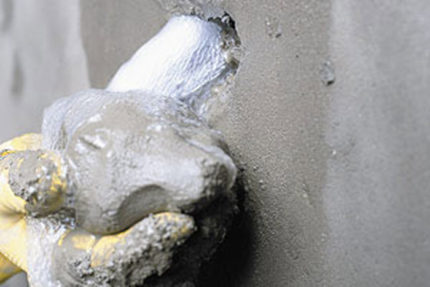
Ready-made waterproofing seals
Ready-made hydraulic seals for concrete wells are very convenient: to use such a seal, it is enough to dilute the solution with water according to the manufacturer's instructions. Consider the most popular waterproofing filling mixtures.
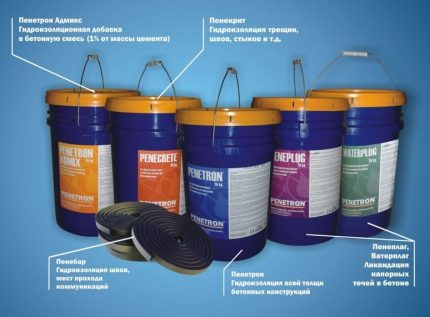
Option # 1: waterlog. The composition of this mixture includes fine quartz sand, aluminum cement, active chemical additives that give the composition plasticity and allow quick hardening. Using this type of seal, you can quickly eliminate the leak within 2 minutes.
Waterplag can be used at temperatures from +5 to +35 degrees. It is used in waterproofing poolin, the underwater part of bridge crossings and similar structures.Among the disadvantages of this hydraulic seal, we can distinguish the need for dilution with warm water + 20-25 degrees, which in some cases is not very convenient.
Option # 2: peneplag. Available in the form of a dry powder, which must be diluted in water. This mixture is designed for waterproofing concrete wells, as well as wells paved with brick, natural or artificial stone. The seals are based on high-quality cement, quartz sand and polymer additives.
This mixture is able to stop the flow with a pressure of more than 5 atmospheres. Hardening time 40 seconds.
Option # 3: powder ex
Fast-acting waterproofing seal, which sets in 10 seconds after application. Such a seal has excellent characteristics: frost resistance, resistance to aggressive environments, ease of use.
The disadvantages of this mixture include the high cost and inability to work at temperatures below +5 degrees.
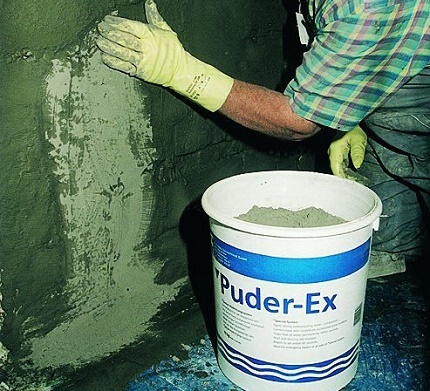
After using any chemicals to carry out repair operations, well water should be returned to SES analysis or a laboratory accredited to conduct this type of research. A study of the composition of the water will help to determine if there are any sources of pollution left in the mine, or if the repair material has affected the quality characteristics.
The technology of using finished compounds
Finished waterproofing seals are most often used to seal the resulting leak, when water that leaks or seeps is capable of causing serious damage.
Using ready-made hydraulic seals, it is necessary to strictly observe the technology of work:
- Surface preparation. At this stage, using a hammer or hammer, it is necessary to clean the surface of the well from exfoliated concrete. However, first the surface must be cleaned of dust, dirt, mold.
- Extension of the repaired area. Expansion to 20-30 mm and hole deepening by 30-50 mm are necessary. This is done in order to “refresh” the edges of the hole. In this case, you need to try to give the shape of the crater to be repaired. When sealing a seam, it is necessary to clean it and deepen it by 5-10 mm. For expansion, it is best to use a wide spatula, treating the damage site from top to bottom. Small cracks and holes can be expanded in any direction, as convenient to the repairman.
- Preparation of the solution. The solution is prepared no later than 2 minutes before use. Preparation recommendations, proportions, optimal water temperature - all this must be studied before preparing the waterproofing mixture. A pure metal (not aluminum!) Container is used to dilute the mixture.
- Filling a crack. We fill not more than 50-70%. This is necessary so that the waterproofing solution expanding during the hardening process does not damage the wall of the well.
- Stabilization of the seal. Press the finished seal with your hands for 3-5 seconds to several minutes (indicated in the instructions for use).
- Care. Depending on the mixture used, it may be necessary to periodically wet the seals for 12-24 hours. If the instruction does not provide for this, then this is not necessary.
- Processing a seal with a waterproofing compound. At this stage, penetrating waterproofing material is used, which will protect the concrete wall of the well and the installed water seal from further destruction. From ready-made waterproofing mixtures, you can choose: "Osmosil", "Hydrotex". It is possible to apply waterproofing only after the seal has completely solidified, unless otherwise provided by the manufacturer.
When diluting the solution, strictly observe the proportions indicated by the manufacturer.Do not save and try to dilute the mixture thinner or, in an effort to increase its effectiveness, make it too thick. In both cases, the waterproofing properties of the seal will be impaired.
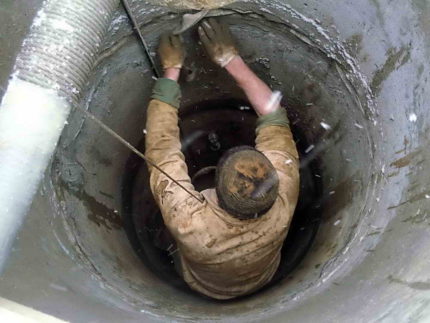
Often along the way, with the repair of cracks, more serious damages that require major well repair. We recommend reading information about their methods of elimination.
DIY filling
Hydro-seals made independently have some features. In quality, they are somewhat inferior to finished fillings produced by an industrial method.
These disadvantages include:
- there is no guarantee of inertia, i.e. “Homemade” can come into contact with the environment, while changing its properties;
- a homemade filling hardens much more slowly than a sample of industrial production;
- there is the possibility of the collapse of the seal and the ingress of its components into the water.
Based on the last paragraph, we do not recommend using toxic compounds to create “home” water seals!
The advantages of homemade fillings include low cost and availability, which is especially important in emergency cases when there is no industrial seal at hand.
# 1: Homemade non-pressure seal
To prepare a waterproofing seal, the following materials are required: fine-grained, preferably sifted sand, cement grade not lower than M300. Proportions - 2 parts of sand + 1 part of cement. Immediately before use, water is added to the composition.
Water must be added gradually, constantly stirring. The consistency should be thick so that a ball can be easily formed from the mixture so that it does not spread.
A seal is introduced into a large crack by hand, into a small one - it is rubbed with a spatula. After the repair is completed, the well section must be closed with an iron plate. After 2-3 days, the iron is removed, and the seal is treated with cement mortar and covered with waterproofing.
This method can only be used to eliminate pressureless and low pressure leaks. Under high pressure (over 3 atmospheres), such a home-made composition is quickly washed away.

# 2: Sealing for joints and small cracks
For all its shortcomings, home-made water seals are excellent for sealing joints in concrete wells. They cope with this task “perfectly”, while allowing them to save a significant amount on industrial products.
Being environmentally friendly and safe, home-made water seals made of sand and high-quality cement reliably protect well water from the ingress of groundwater, impurities, and soil.
To increase the efficiency of waterproofing the seams of a well, a “liquid glass” composition can be added to a solution of sand and cement. Such a mixture will make the seal better and more durable. Proportions of 1: 1: 1 (sand: cement: water glass). It is necessary to add “liquid glass” 1 minute before sealing, because hardening of the composition is very fast!
The technology for the production of joints for a concrete well is as follows:
- Surface preparation, which consists in the removal of exfoliated concrete, the remains of the old seal.
- If necessary, treat the walls of the well with an antibacterial composition to remove / prevent mold.
- Cleaning joints from dust, dirt, old waterproofing. Expansion of the seam by 5-10 mm by gating. Used tools - hammer drill, hammer, chamfer.
- Preparation of a waterproofing mixture.
- Pre-wetting the seams. The seam should not be wet, namely moistened. It is best to use a fabric that absorbs water for this procedure.
- Application of a waterproofing mixture with a spatula. Filling cracks and putty joints.
- Application of a penetrating waterproofing solution.
How often are waterproofing joints done? Waterproofing of joints of a concrete well is carried out on average 1 time in 5 years, provided that the well is operated correctly. Emergency waterproofing is carried out in the event of a leak, deterioration in the quality of well water, after a sharp drainage.
It is best to carry out waterproofing work in the spring, after the final melting of the snow, when the average daily temperature is set at not lower than +5 degrees.

Safety measures for work in a well
Work to repair a leak or seal a well is a hazardous activity, therefore it is necessary to strictly comply with safety requirements.
At the preparatory stage, you should carefully handle a jackhammer or hammer, which are used to clean the surface of exfoliated concrete and chips.
When kneading a water seal, you must protect your hands with tight rubber gloves. The tool used to apply the water seal must be cleaned immediately after completion of the work of the waterproofing mixture.
When using ready-made seals, make sure that the composition does not get on exposed skin. When diluting the powder, try not to inhale the vapors that are generated, as they can harm the mucosa.
Selection of the optimal hydraulic seal
Waterproofing seals of an industrial or own production are an easy way to eliminate pressure or pressureless leaks in a well. The technology of using water seals is very simple, even a layman can make waterproofing a concrete well.
When choosing a method for eliminating a leak, pay attention to its characteristics: we recommend that pressure leaks be eliminated with the help of ready-made seals of quick hardening.
To eliminate non-pressure leaks, as well as waterproofing the joints inside the well, you can use do-it-yourself seals. The use of homemade water seals is possible only in a dry well, because the available water will wash the solution until it hardens.
The list of measures for servicing wells includes not only repairs. Significantly more often well shaft cleaning, methods and features of the implementation of which are described in detail in our proposed article.
Conclusions and useful video on the topic
The roller will familiarize you with the procedure and technological stages of sealing joints in a concrete well:
Detailed video instruction on eliminating a pressure leak using a Peneplag hydraulic seal:
Proper manufacture of hand-made fillings and the use of industrial compounds guarantee an excellent result, relieve leaks and cracks in the reinforced concrete well trunk.
We are interested in your personal experience in repairing leaks in a concrete well mine.Please write comments in the block under the submitted article. Ask questions, share useful information and photos of the process of filling cracks and weaknesses in the wellbore here.

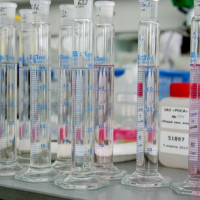 How to properly analyze the water from the well and disinfect it after checking
How to properly analyze the water from the well and disinfect it after checking 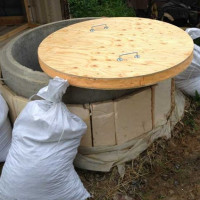 Do-it-yourself well warming for the winter: an overview of the best materials and methods of warming
Do-it-yourself well warming for the winter: an overview of the best materials and methods of warming  Do-it-yourself well cleaning: a review of the best preventative and capital methods
Do-it-yourself well cleaning: a review of the best preventative and capital methods  Well bottom filter: arrangement technology and overview of filtration materials
Well bottom filter: arrangement technology and overview of filtration materials 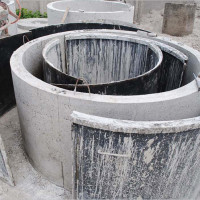 DIY rings for a well: step-by-step technology for manufacturing reinforced concrete rings
DIY rings for a well: step-by-step technology for manufacturing reinforced concrete rings  Digging a well with your own hands: types of well structures + an overview of the best digging technologies
Digging a well with your own hands: types of well structures + an overview of the best digging technologies  How much does it cost to connect gas to a private house: the price of organizing gas supply
How much does it cost to connect gas to a private house: the price of organizing gas supply  The best washing machines with dryer: model rating and customer tips
The best washing machines with dryer: model rating and customer tips  What is the color temperature of light and the nuances of choosing the temperature of the lamps to suit your needs
What is the color temperature of light and the nuances of choosing the temperature of the lamps to suit your needs  Replacement of a geyser in an apartment: replacement paperwork + basic norms and requirements
Replacement of a geyser in an apartment: replacement paperwork + basic norms and requirements
I closed the well with a peneplag (there was no other in the store, but nothing good happened with a homemade one). I liked the quality, it sets really quickly, so you need to knead in small quantities and follow the instructions in proportion. And so, this is the work of a couple of hours and at least two people, there is nothing complicated in it. The well must be looked after and periodically checked.
This peneplag is painfully expensive. I don’t think it costs such a big overpayment. I used the Waterplag, which is half the price, and it does a good job. Seals firmly and quickly. And I do not see any inconvenience in taking a thermometer in advance and measuring the temperature of the water before making the mixture, so that it is about +20.